My fellow gardeners, it’s time to bust the myth that having clay soil leads to horticultural heartache. Establishing and maintaining plants in heavy soil may require a bit more time and muscle on the front end, but the best way forward is to take an attitude of love, not war, and work primarily with plants that are naturally adapted to grow in clay.
Over half of soils in the United States are predominantly clay, and modern construction methods often strip away humus-rich topsoil and seriously compact the subsoil that remains. To complicate matters, there is no one type of clay soil. Mineral content, pH, and shrink-swell properties vary widely, and these variables determine which plants will work best for you. Taking time to get to know your particular clay soil will inform how you interact with and grow in it. Learn more about your clay soil here.
There is a clay-busting shrub for every situation and season. Here are a few of my favorites that will meet you more than halfway in minimally amended clay.
Learn More:
See the Garden Photo of the Day!
Shrubs with Bountiful Flowers and Fruit for Clay Soil
Incrediball® smooth hydrangea produces a reliable bounty of summer blooms (see above)
Name: Hydrangea arborescens ‘Abetwo’
Zones: 3–8
Size: 4 to 5 feet tall and wide
Conditions: Partial shade; consistently moist soil
Native range: Eastern and central United States
Seasons of interest: Summer, fall, and winter
There are many shrubs that will cheerfully flower and set fruit in heavy soil, taking advantage of readily available water and nutrients. Incrediball® smooth hydrangea heralds in the summer season with masses of billowy white inflorescences, and its straw-colored dried flower heads persist well into fall and winter. For decades, ‘Annabelle’ has reigned as the go-to smooth hydrangea, but this newer cultivar offers even larger floral clusters that emerge lime green atop sturdier stems. Incrediball® was a top performer in Mt. Cuba Center’s extensive trial of smooth hydrangea cultivars. Since it flowers on new wood, stems can be selectively pruned in early spring without compromising the floral display. Smooth hydrangea appreciates the moisture-retentive properties of clay, but if the weather patterns are leaning toward drought, irrigate slowly and deeply to keep the foliage looking its best, especially in locations with more sun.

Double Take® Orange flowering quince is thornless but still deer resistant
Name: Chaenomeles speciosa ‘Orange Storm’
Zones: 5–9
Size: 4 to 5 feet tall and 3 to 4 feet wide
Conditions: Full sun; adaptable to a wide range of soil conditions
Native range: China, Tibet, and Myanmar
Seasons of interest: Winter and spring
The unabashed, old-fashioned cheeriness of flowering quince may be charming, but thorns, rust-pocked fruits, and a tendency for plants to prematurely drop leaves have long been the trade-offs for the early spring joy it brings. However, Double Take® Orange flowering quince is thornless and fruitless, with full double flowers in a fetchingly fiery shade of orange. Other cultivars in the Double Take® series offer enchanting early-season blooms in tints of pink, peach, and scarlet. Any of these would be perfect in an informal border, matched with neighbors that contribute interest in summer and fall. Flowering quince is best adapted to acid to neutral clay, and can tolerate drought once established.
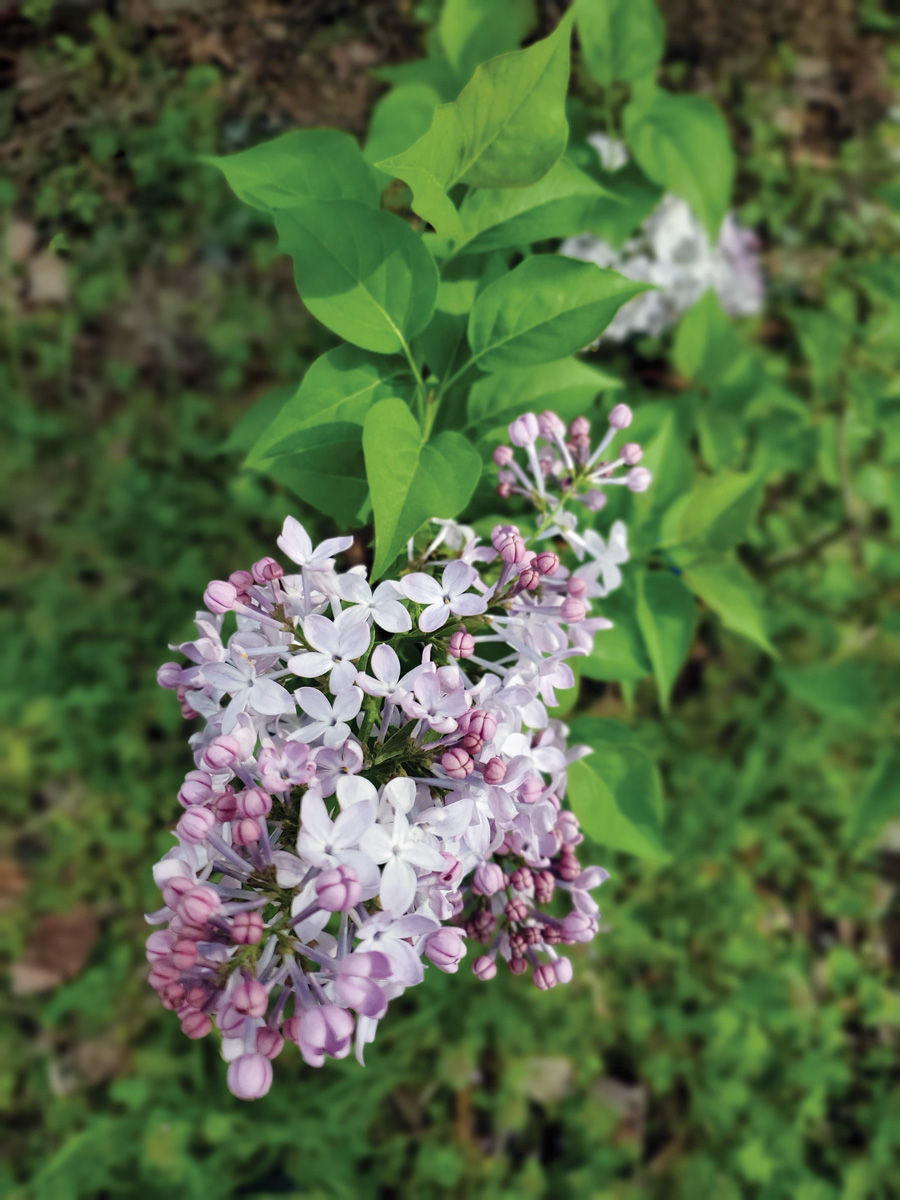
‘Excel’ lilac takes hot, humid summers in stride
Name: Syringa × hyacinthiflora ‘Excel’
Zones: 3–8
Size: 7 to 10 feet tall and 6 to 8 feet wide
Conditions: Full sun to partial shade; average to dry soil
Native range: Hybrid
Seasons of interest: Spring and summer
If you are a Southern gardener for whom lilacs have always been a distant dream, let’s talk about the heat tolerance of ‘Excel’ lilac. Lilacs will settle into clay with no problem, as long as it can be amended to achieve a neutral pH, but mild winters and sweltering summers are typically killers for this heat-sensitive genus. ‘Excel’ is a hybrid that blooms 10 days earlier than common lilac (Syringa vulgaris and cvs., Zones 3–8), is resistant to powdery mildew, and smells exactly like a lilac should. Northern gardeners will appreciate this cultivar’s earlier bloom time too. Maximize its swoon-worthy flowers by siting it in full sun with perhaps a few hours of afternoon shade.
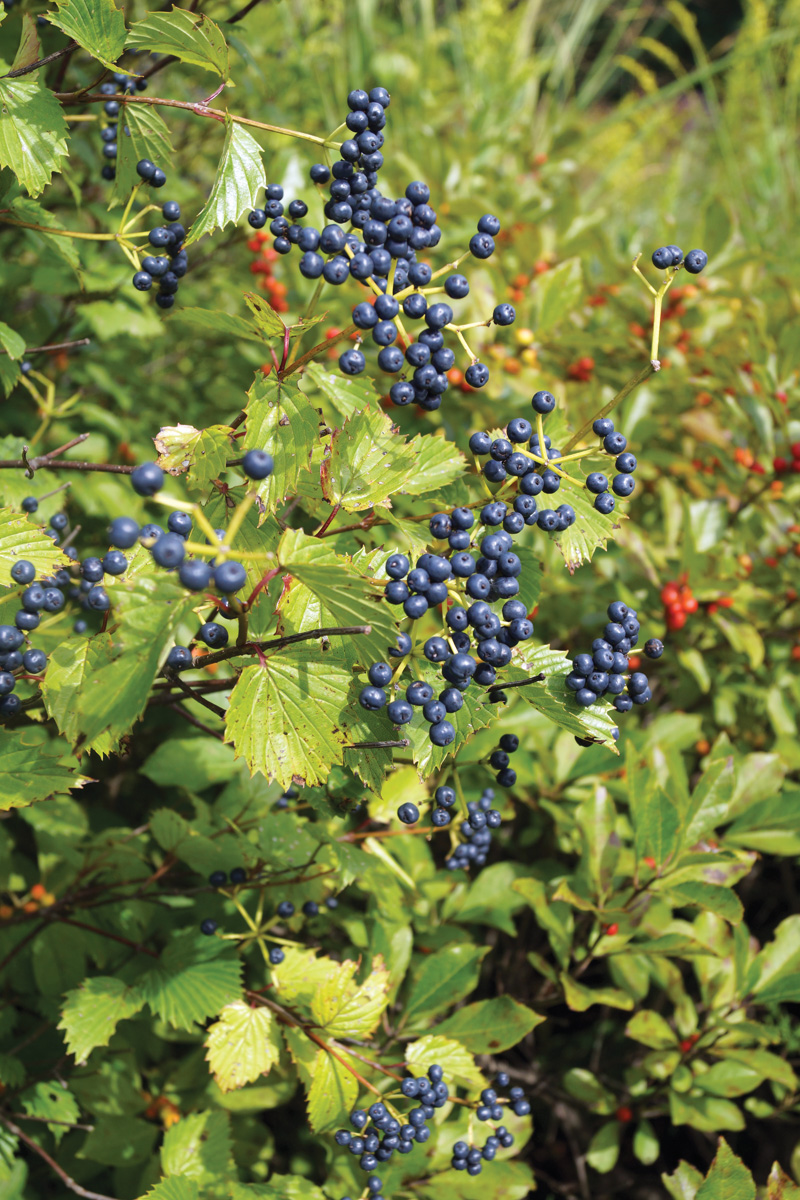
Attract birds and wildlife with Blue Muffin® arrowwood viburnum
Name: Viburnum dentatum ‘Christom’
Zones: 3b–8
Size: 4 to 7 feet tall and 3 to 5 feet wide
Conditions: Full sun to partial shade; average to moderately moist soil
Native range: Eastern North America
Seasons of interest: Spring, summer, and fall
How about a native plant that thrives in clay soil, attracts butterflies in spring, hosts the larvae of the spring azure butterfly, and may even offer berries to birds and wildlife in fall? Blue Muffin® arrowwood viburnum ticks all those boxes and provides a dash of unique texture with its toothed and pleated leaves. This is a somewhat restrained cultivar, perfectly sized to fit into a variety of landscapes. While it doesn’t like to be in standing water, it does appreciate clay soil that stays evenly moist, and it is not particularly fussy about pH. Flat-topped clusters of small white flowers emerge in late spring after the foliage. Blue-black berries may develop later in the summer if a different cultivar, or even the straight species, has been planted in close enough proximity for cross-pollination.
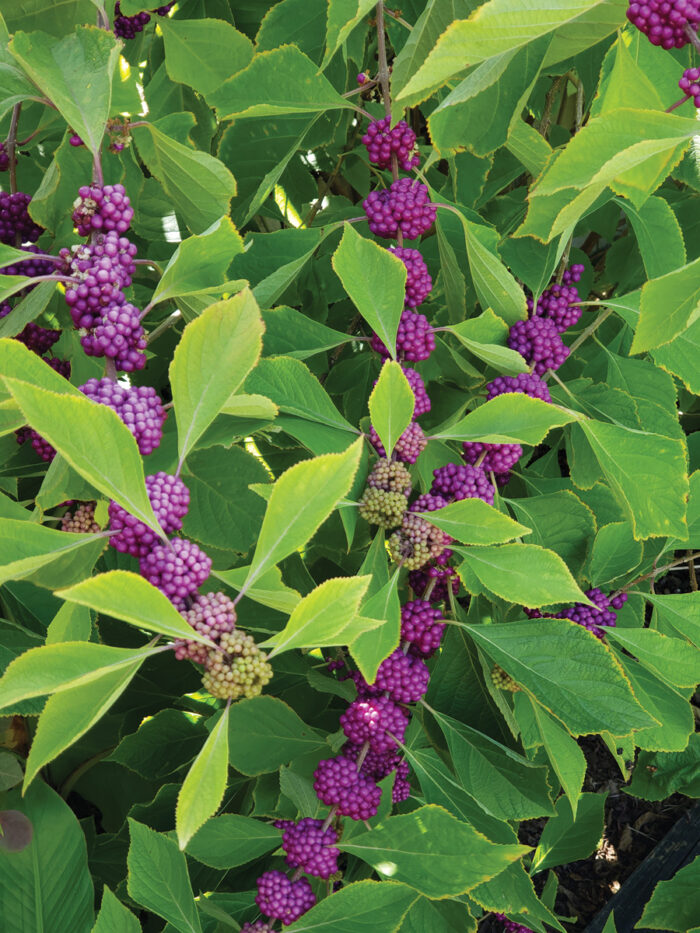
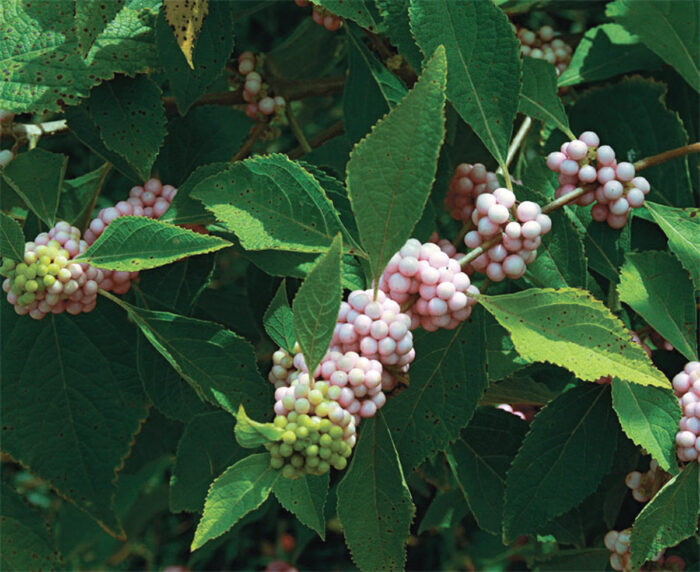
American beautyberry ends the season in style
Name: Callicarpa americana and cvs.
Zones: 5b–10
Size: 3 to 7 feet tall and 3 to 6 feet wide
Conditions: Full sun to partial shade; adaptable to a wide range of soil conditions
Native range: Central and southeastern United States, Bermuda, and Cuba
Seasons of interest: Summer and fall
American beautyberry is a good name for this next native plant, but wow-berry would be even more accurate. For most of the season, its long, arching stems and medium-green opposite leaves blend amicably into the mixed border. But in early fall, clusters of shiny magenta berries hit the stage and elicit buzz from passing humans and mockingbirds alike. You’d think a plant that creates such drama might be a diva, but this beauty takes clay soils in stride and easily tolerates short periods of extra moisture. To maximize the berry show, give it as much sun as you can, and to keep its form neater, prune it to the ground every other year. I love the contrast of its yellow fall color with the vivid berries, but if that’s too garish for you, try a pink-berried cultivar like ‘Welch’s Pink’ (above right).
Look for Landscape Staples with Reliable Foliage
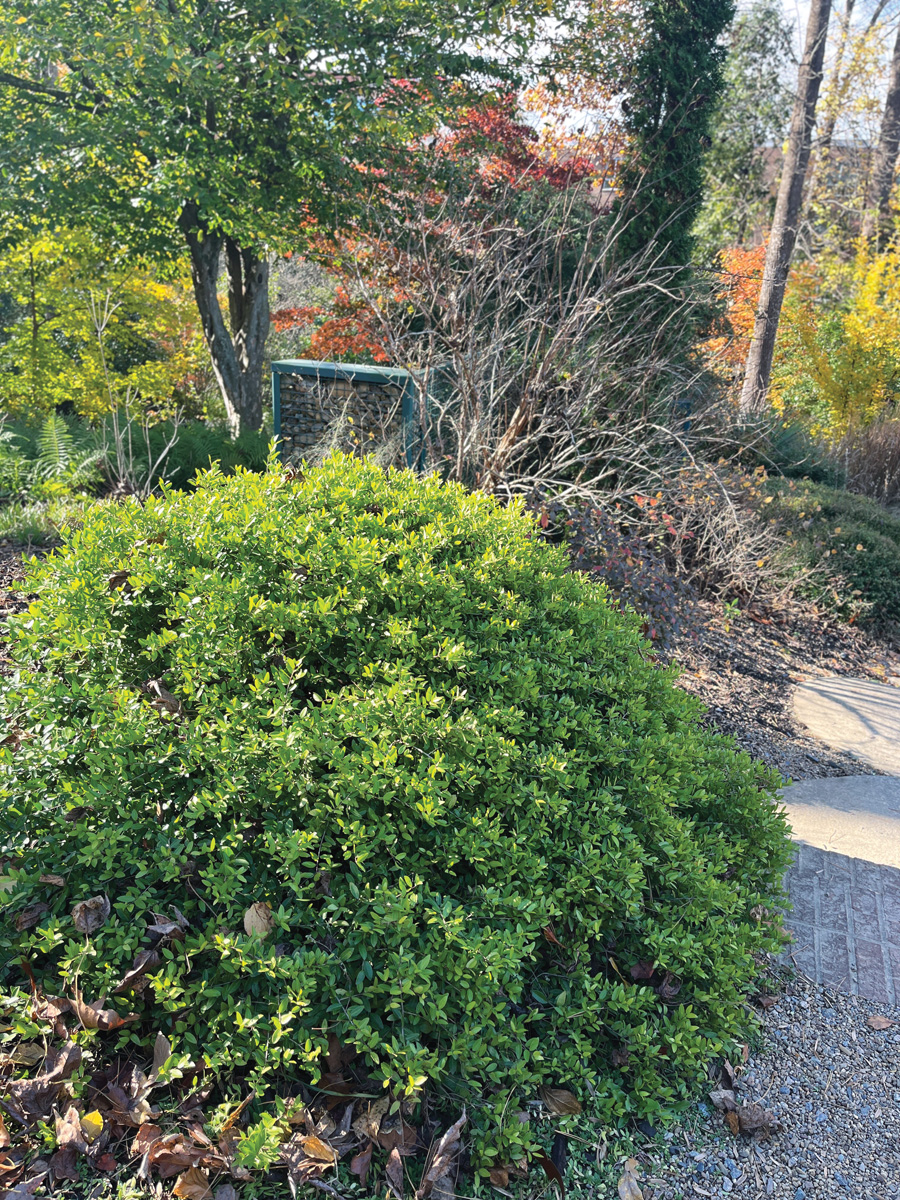
‘Nana’ yaupon holly has fine, glossy foliage and a compact form
Name: Ilex vomitoria ‘Nana’
Zones: 7–9
Size: 3 to 5 feet tall and 3 to 6 feet wide
Conditions: Full sun to partial shade; well-drained to occasionally wet soil
Native Range: Eastern United States and Mexico
Seasons of interest: Winter, spring, and summer
For structure and consistency in a landscape design, nothing beats a good evergreen. ‘Nana’ yaupon holly is a rock-solid, low-maintenance, sun-loving evergreen that rarely needs irrigating. It may not be a heart-stopper, but it is a tried-and-true supporting player for gardens in Zone 7 and higher. This nativar does fine in acid to alkaline clay, but take care not to plant it where water collects. Instead, create a planting mound with amended clay if needed. Left unpruned, ‘Nana’ grows in a fairly neat, rounded form. New foliage emerges in a pleasing shade of light green. Its small flowers provide nectar for bees, and birds find natural fortresses in the dense foliage, but it produces no berries.
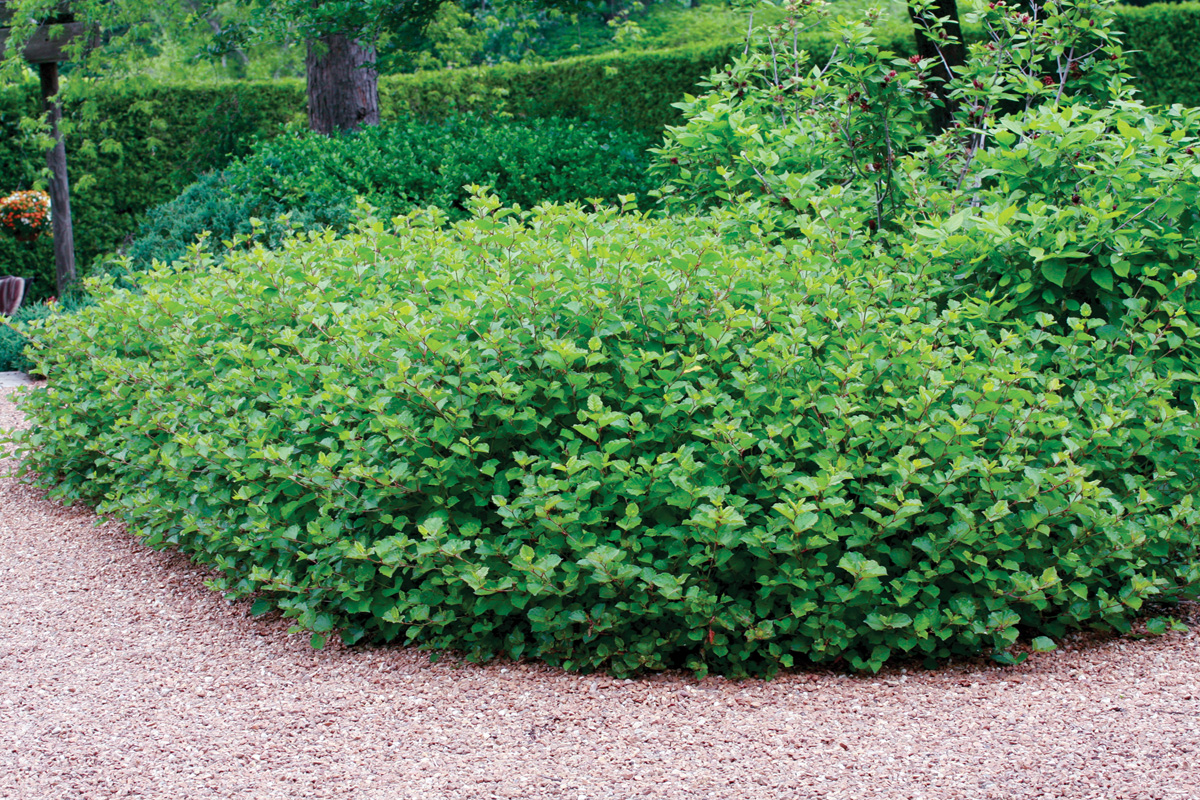
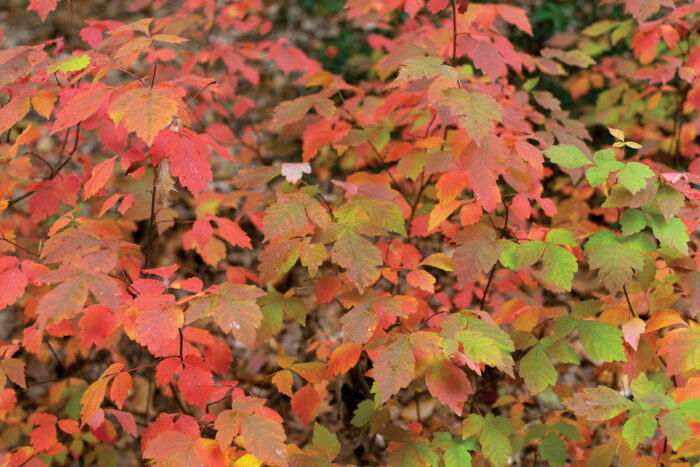
Cover some ground with ‘Gro-Low’ aromatic sumac
Name: Rhus aromatica ‘Gro-Low’
Zones: 3–9
Size: 1½ to 2 feet tall and 6 to 8 feet wide
Conditions: Full sun to partial shade; average to dry, well-drained soil
Native range: North America, from eastern Canada to Mexico
Seasons of interest: Spring, summer, and fall
If you should ever doubt the tenacity of sumacs in clay soil, just check out any interstate roadside. ‘Gro-Low’ aromatic sumac is a durable, attractive spreader, a bit like a cross between a ground cover and a shrub. This native is very adaptable, tolerating a wide range of soil textures as long as they are reasonably well drained. Up close, the trifoliate, shallowly lobed leaves are charming, and in fall they blaze with colors that range from gold to clear red with tints of burgundy. Female cultivars like ‘Gro-Low’ have light yellow flowers in spring that provide nectar to butterflies and moths, and small clusters of maroon berries that feed birds and mammals in autumn.

‘Vintage Jade’ distylium offers subtle, alluring texture
Name: Distylium ‘Vintage Jade’
Zones: 6b–9
Size: 2½ to 4 feet tall and 5 to 8 feet wide
Conditions: Full sun to partial shade; average to dry, well-drained soil
Native Range: China
Seasons of Interest: Winter, spring, and summer
‘Vintage Jade’ distylium, a relative newcomer in the world of broadleaf evergreens, has been proving its mettle long enough to show that it’s a keeper. With a wide, spreading habit, it is perfect for filling a sunny or slightly shady expanse, whether it is sited along a foundation or incorporated into a long border. Its elongated, glaucous blue-green leaves provide the right amount of texture balanced with structure, like lightly tousled hair that looks carefree but contained. It has tenacity and resilience, and while it does take a few years to establish and start putting on significant new growth, you’ll be rewarded with an extremely low-maintenance year-round beauty.
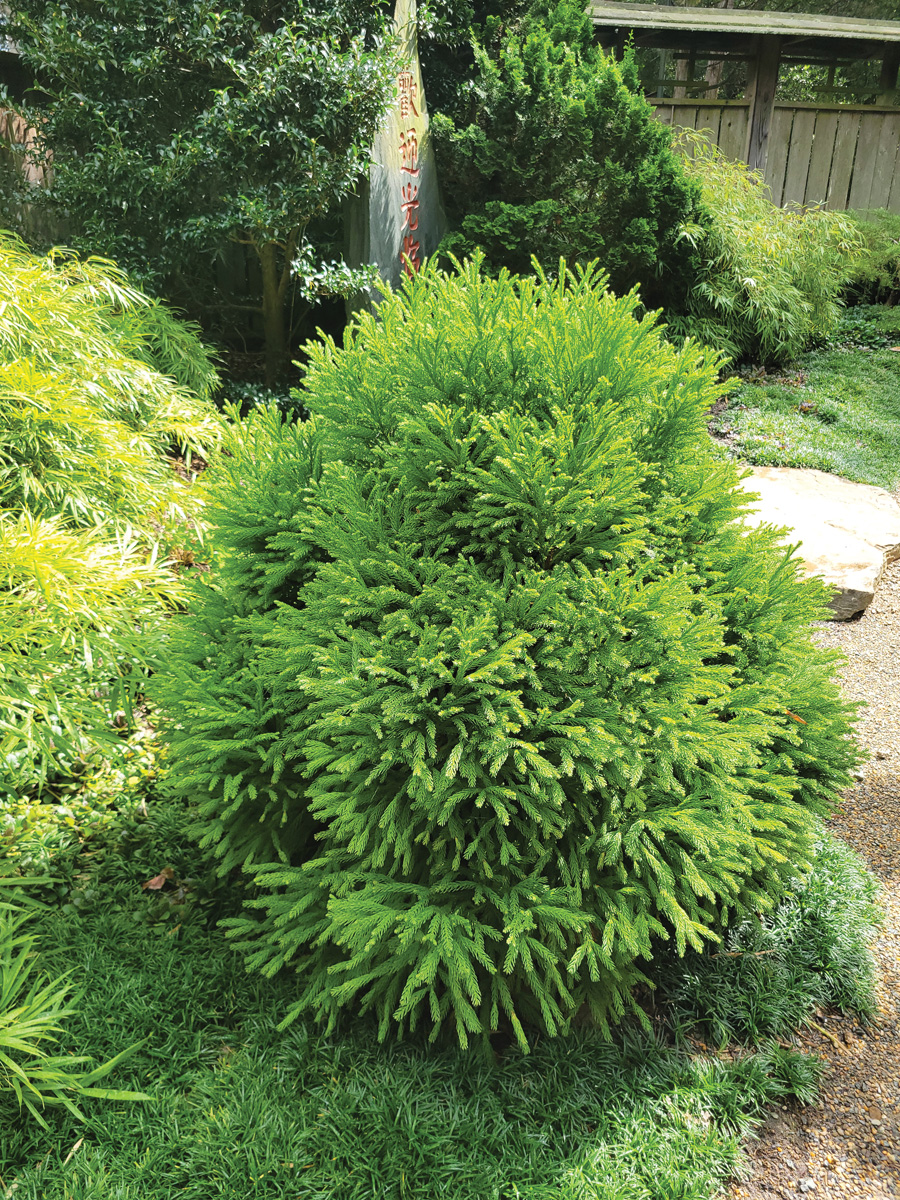
‘Globosa Nana’ Japanese cedar exudes cheerful elegance
Name: Cryptomeria japonica ‘Globosa Nana’
Zones: 6–8
Size: 3 to 5 feet tall and wide
Conditions: Full sun to partial shade; moderately moist soil
Native range: Japan and China
Seasons of interest: Winter, spring, and summer
‘Globosa Nana’ Japanese cedar is my stretch plant. Yes, this elegant, needled evergreen does prefer well-drained loam, but it can take acid to neutral clay if it is planted with care and a bit of modest soil amendment. Plant it on a slight mound in full sun to light shade, and mulch well. If you make even watering a priority for the first few years, your reward will be a fine-textured, naturally mounded, pest- and disease-free specimen that gets more attractive with each year. It also looks beautiful planted in masses. Its touchable foliage starts out chartreuse in spring and ages to a rich green that will sometimes take on reddish-bronze tints in winter.
| PLANT LISTS |
Clay soil–busting companions with reliable foliageWhether you are looking for a mass of fine blades that sway in the breeze or a stalwart evergreen to contrast a flowery companion, here are a few fun selections to try. |
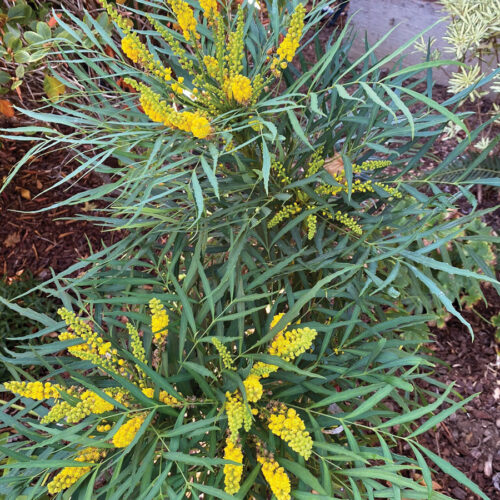
‘Soft Caress’ mahonia |
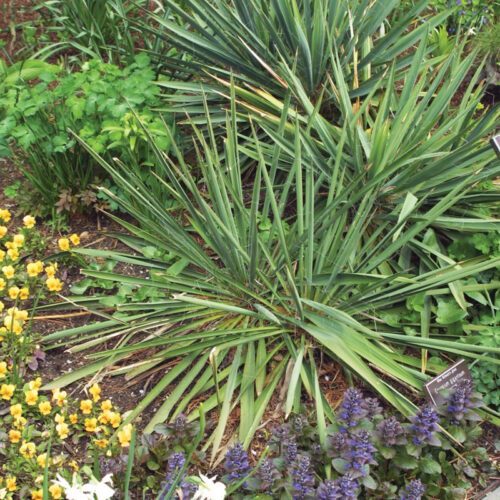
Adam’s needle |
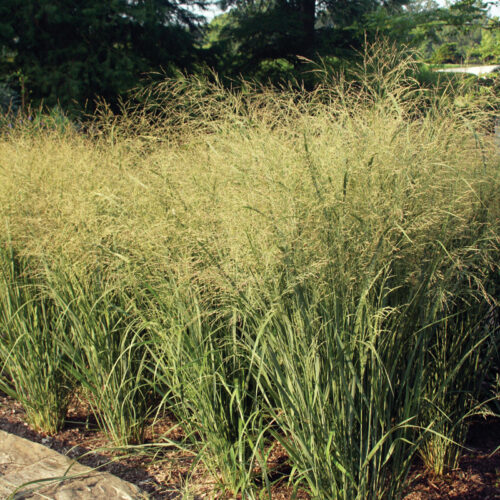
Switchgrass |

‘Florida Sunshine’ anise |
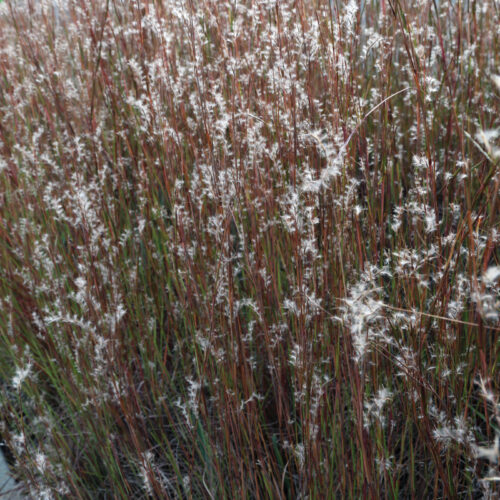
Little bluestem |
Clay soil–busting companions with great flowers |
If your landscape is heavy on texture, try adding bursts of seasonal color with one of these beauties. In addition to blooms, all these choices offer solid performance over a long season. |
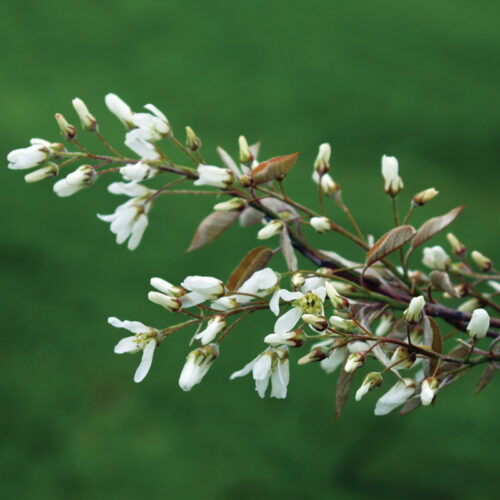
Downy serviceberry |
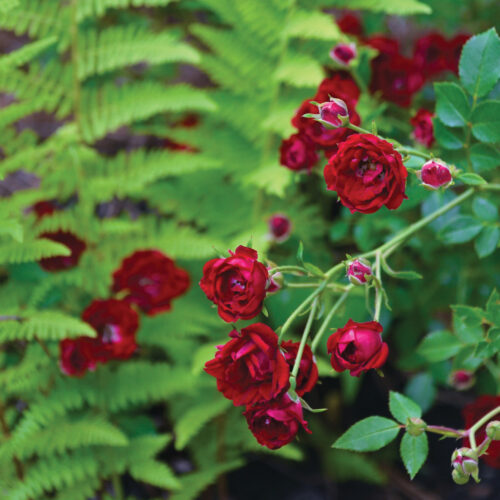
‘Red Cascade‘ rose |
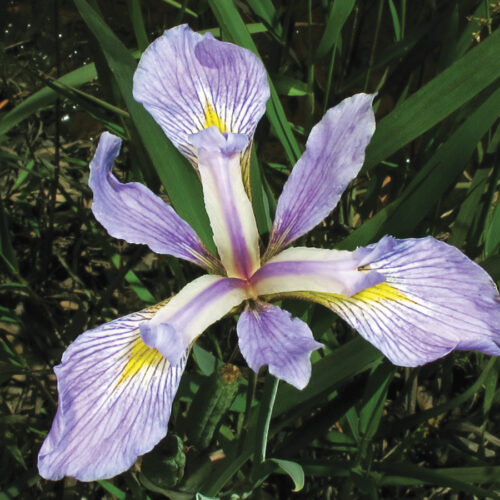 Southern blue flag iris |
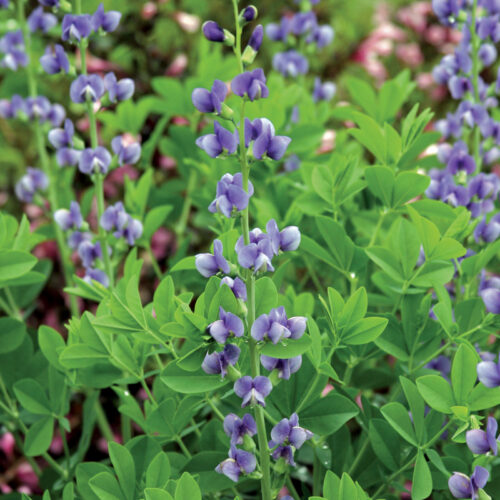 Baptisia |
Plant sources
The following mail-order sellers offer many of the plants featured here:
• Bluestone Perennials, Madison, OH; 440-428-7535
• Direct Native Plants, Middle River, MD; 410-696-1372
• Great Garden Plants, Grand Haven, MI; 877-447-4769
• Wilson Bros. Gardens, McDonough, GA; 770-573-1778
Fine Gardening Recommended Products
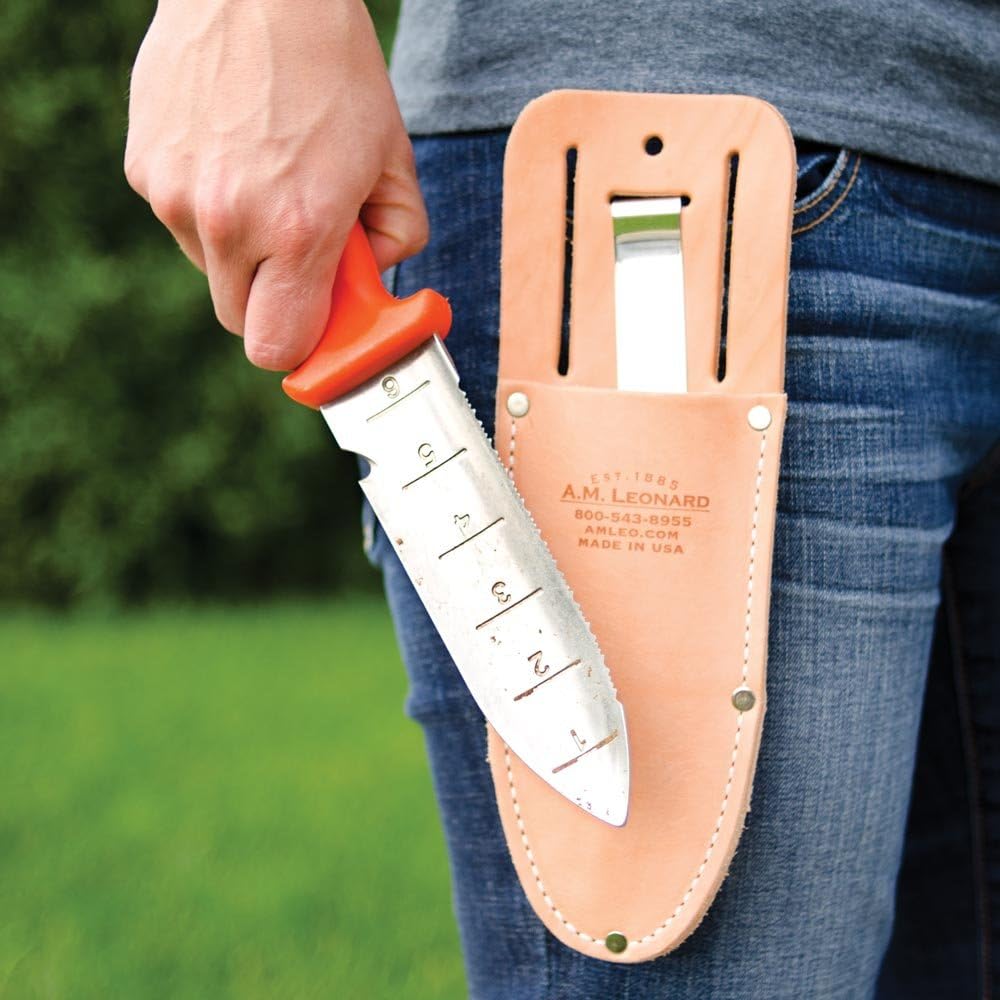
A.M. Leonard Deluxe Soil Knife & Leather Sheath Combo
Fine Gardening receives a commission for items purchased through links on this site, including Amazon Associates and other affiliate advertising programs.
MULTITASKING DUAL EDGES: a deep serrated edge and a tapered slicing edge ideal for tough or delicate cuts. DURABLE 6-inch stainless steel blade withstands 300 lbs of pressure. TWINE CUTTING NOTCH, DEPTH GAUGE MARKINGS & spear point – no need to switch tools when using this garden knife. LEATHER SHEATH: heavy duty, protective, clip on sheath to keep your knife convenient and secure. LIFETIME WARRANTY.
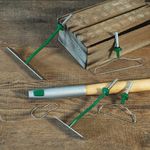
Johnny’s Selected Seeds Connecta® Cultivation Kit
Fine Gardening receives a commission for items purchased through links on this site, including Amazon Associates and other affiliate advertising programs.
Choose the right tool head for the job and switch out quickly with a simple push-button release. Includes the Connecta receiver, Connecta Collinear 4 head, Connecta Collinear 7 head, Connecta Contour Wire 4 head, Connecta Contour Wire 6 head, a sustainably harvested oiled ashwood handle, and a stainless-steel carrying clip.
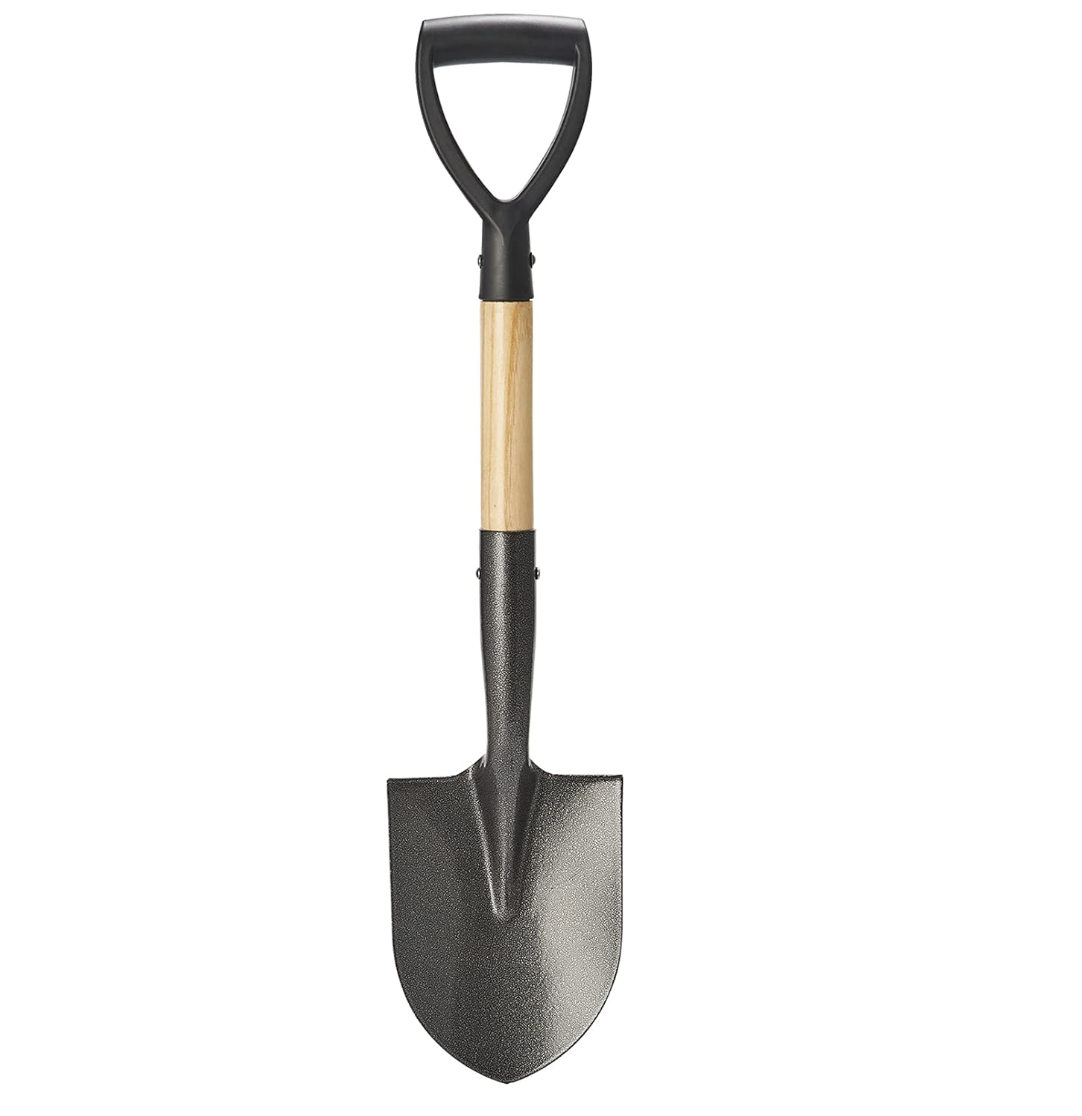
Corona® Multi-Purpose Metal Mini Garden Shovel
Fine Gardening receives a commission for items purchased through links on this site, including Amazon Associates and other affiliate advertising programs.
Longer Service Life: The blade of this round small shovel is made of carbon steel, which can effectively improve the hardness by high temperature quenching, and the surface has anti-rust coating to avoid rusting. In the process of use when encountering hard objects will not bend and deformation.
Sturdy Structure: The small garden shovel with D-handle, ergonomically designed grip can increase the grip of the hand when using, the handle is made of strong fiberglass, will not bend and break under heavy pressure. Quick Digging: Well-made digging shovel has a sharp blade, and the round shovel head is designed to easily penetrate the soil and cut quickly while digging to enhance your work efficiency.

